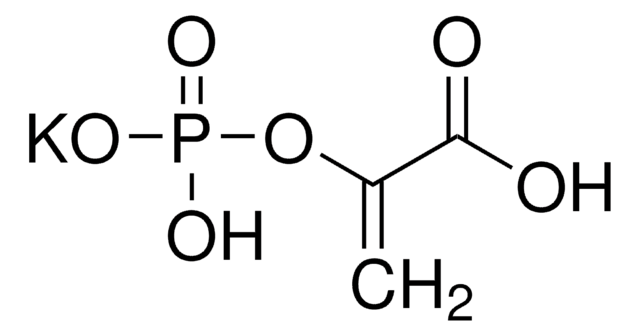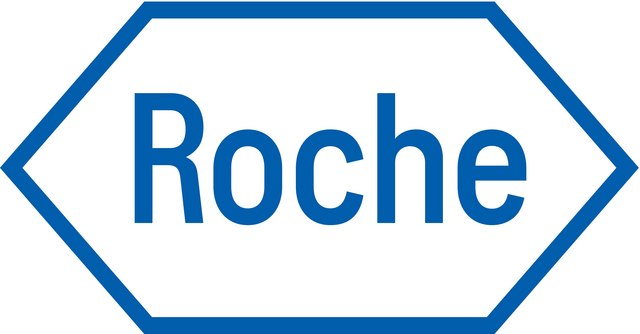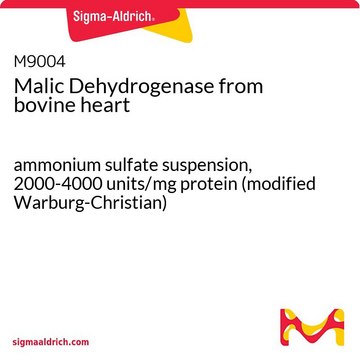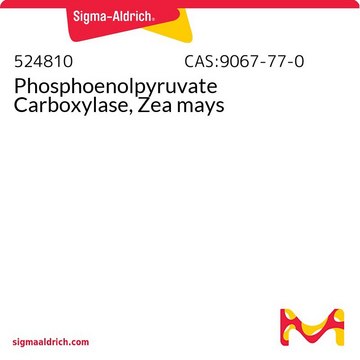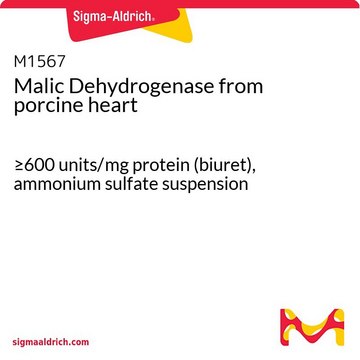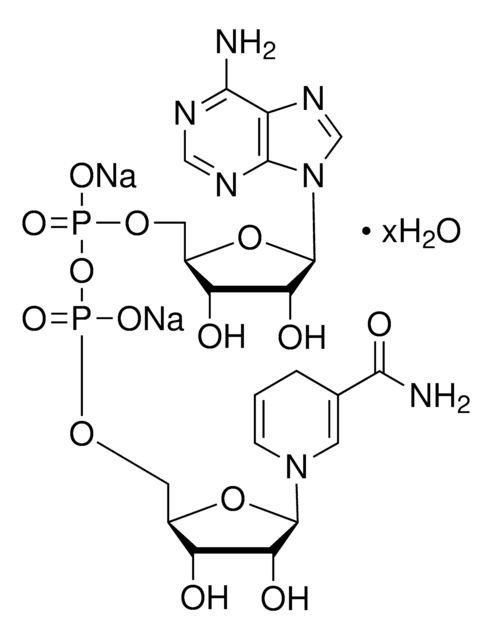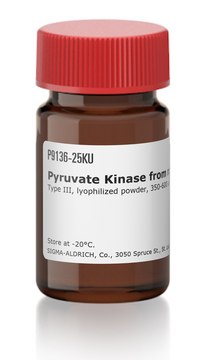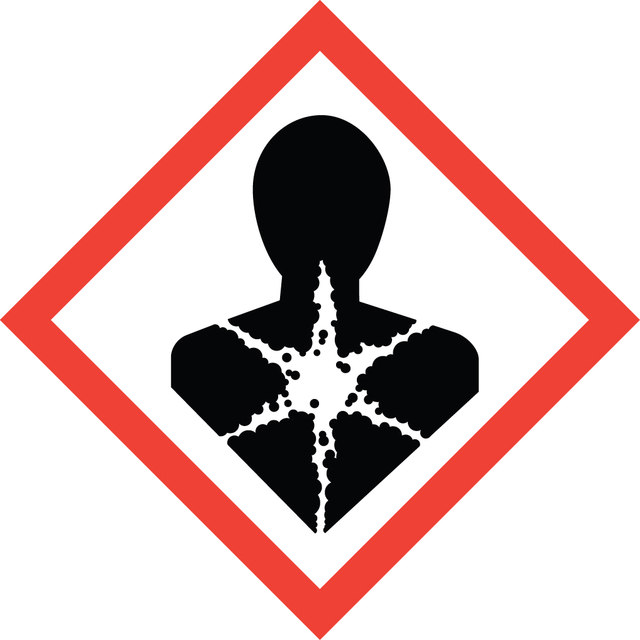推荐产品
应用
Phosphoenolpyruvate carboxylase (PEPC) is an enzyme useful for enzymatic determination of carbon dioxide when coupled with malate dehydrogenase in clinical analysis. PEPC is also used to study carbon assimilation, post-translational regulation and allosteric regulation in various plants .
生化/生理作用
Phosphoenolpyruvate carboxylase (PEPC) catalyzes the addition of bicarbonate to phosphoenolpyruvate (PEP) to form the four-carbon compound oxaloacetate and inorganic phosphate . In CAM and C4 plants, PEPC catalyzes the photosynthetic assimilation of CO2 into an organic acid. PEPC is activated by glucose-6-phosphate and is inhibited by malate and aspartate. PEPC comprises about 0.5-2% of the soluble protein in alfalfa and soybean nodules .
单位定义
One unit causes the oxidation of one micromole of NADH per minute at pH 8.0 at 30°C.
外形
White amorphous lyophilized powder containing BSA and sugar alchohols as stabilizers.
警示用语:
Danger
危险声明
预防措施声明
危险分类
Resp. Sens. 1
储存分类代码
11 - Combustible Solids
WGK
WGK 1
闪点(°F)
Not applicable
闪点(°C)
Not applicable
法规信息
含少量动物源组分生物产品
常规特殊物品
历史批次信息供参考:
分析证书(COA)
Lot/Batch Number
Mika Nomura et al.
Plant & cell physiology, 47(5), 613-621 (2006-03-10)
Phosphoenolpyruvate carboxylase (PEPC, EC 4.1.1.31) is believed to play a significant role in supporting nitrogen fixation via anaplerotic CO2 fixation for recycling carbon in nodules. Using the antisense technique, we decreased the expression levels of the nodule-enhanced PEPC gene (Ljpepc1)
Jitender Singh et al.
Gene, 500(2), 224-231 (2012-06-20)
Phosphoenolpyruvate carboxylase is an ubiquitous cytosolic enzyme that catalyzes the ß-carboxylation of phosphoenolpyruvate (PEP) and is encoded by multigene family in plants. It plays an important role in carbon economy of plants by assimilating CO2 into organic acids for subsequent
Patrizia De Nisi et al.
Plant physiology and biochemistry : PPB, 57, 168-174 (2012-06-19)
The regulation exerted by the Fe status in the plant on Fe deficiency responses was investigated in Cucumis sativus L. roots at both biochemical and molecular levels. Besides the two activities strictly correlated with Fe deficiency response, those of the
Masataka Wakayama et al.
Journal of plant research, 126(2), 233-241 (2012-10-18)
The C(4) grass Arundinella hirta exhibits a unique C(4) anatomy, with isolated Kranz cells (distinctive cells) and C(4)-type expression of photosynthetic enzymes in the leaf sheath and stem as well as in the leaf blade. The border zones between these
Multiple origins of allopolyploid wheatgrass Elymus caninus revealed by RPB2, PepC and TrnD/T genes.
Chi Yan et al.
Molecular phylogenetics and evolution, 64(3), 441-451 (2012-05-24)
We examined evolutionary mechanisms in the tetraploid Elymus caninus by comparing the phylogenetic relationships of 21 accessions suggested by sequence data from two single copy nuclear genes, the largest subunit of RNA polymerase II (RPB2) and phosphoenolpyruvate carboxylase (pepC), and
我们的科学家团队拥有各种研究领域经验,包括生命科学、材料科学、化学合成、色谱、分析及许多其他领域.
联系技术服务部门